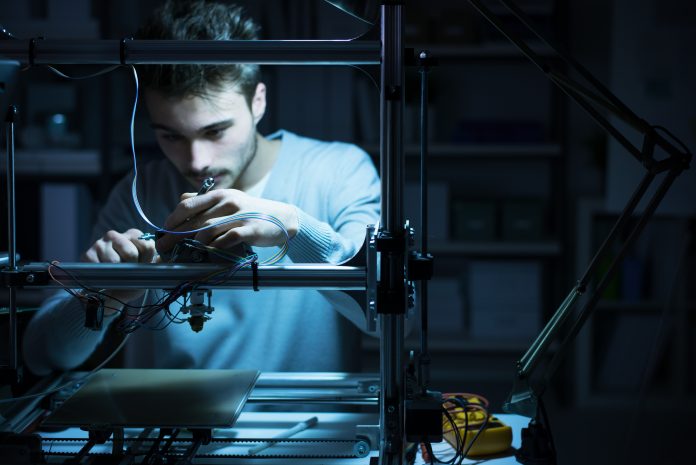The National Institute of Standards & Technology works to promote U.S. innovation and industrial competitiveness by advancing measurement science, standards and technology to enhance economic security and improve quality of life
Founded in 1901, the National Institute of Standards & Technology (NIST) is one of the United States’ oldest physical science laboratories.
Congress established the agency to remove a major challenge to U.S. competitiveness at the time – a measurement structure that lagged behind economic rivals such as the United Kingdom and Germany.
Today, from the smart electric power grid and electronic health records to atomic clocks, advanced nanomaterials and computer chips, a host of products and services rely on technology, measurement and standards provided by NIST.
NIST measurements support the smallest technology to the largest and most complex creations, from nanoscale devices so small that tens of thousands can fit on the end of a single human hair to earthquake- resistant skyscrapers and worldwide communication networks.
Industry’s national laboratory
NIST runs a number of laboratories to support the advancement of technology.
Communications Technology Laboratory
The CTL promotes the development and deployment of advanced communications technologies through the conduct of leading-edge research and development on both the metrology and understanding of physical phenomena, material capabilities and complex systems relevant to advanced communications.
The laboratory performs research on high-speed electronics, wireless systems metrology, antennas, network design and optimisation, spectrum sharing and public safety communications.
Engineering Laboratory
The Engineering Laboratory is responsible for anticipating and meeting the measurement science and standards needs of technology-intensive manufacturing, construction and cyber-physical systems, including the Smart Grid Programme Office.
Information Technology Laboratory
The Information Technology Laboratory develops and disseminates standards, measurements and testing for interoperability, security, usability and reliability of information systems, including cybersecurity standards and guidelines for federal agencies and U.S. industry.
Materials Measurement Laboratory
MML is the national reference laboratory for measurements in the chemical, biological and material sciences through activities ranging from fundamental and applied research to the development and dissemination of certified reference materials, critically evaluated data and other programmes and tools to assure the quality of measurement results. MML is also responsible for coordinating the NIST-wide Standard Reference Material and Standard Reference Data programmes.
Physical Measurement Laboratory
PML is a world leader in the science of measurement. It sets the definitive U.S. standards for nearly every kind of measurement employed in commerce and research, provides NIST-traceable calibrations and disseminates standards and best practices throughout the nation.
Industry impacts
NIST is supporting U.S. competitiveness in areas of national importance from communications technology and cybersecurity to advanced manufacturing and disaster resilience.
In one current initiative, NIST is working with companies in the semiconductor industry, which generates hundreds of billions of dollars in sales each year and supports 1 million jobs in the U.S., to identify and tackle the biggest research challenges facing the sector.
Through the Nanoelectronics Research Initiative (NRI), companies like IBM, Intel and Texas Instruments can help to guide academic research on the next generation of computing technologies.
More than 700 students have been trained for hi-tech professions through the scheme and there have been 60 patent applications on work leveraging the NRI.
Elsewhere, NIST has developed a new atomic clock the size of a computer chip, which eliminates he need for large microwave cavities, and adapted standard microfabrication techniques to create an economically viable device. Building on NIST prototypes, Microsemi has created commercialised chip-scale atomic clocks that are about a thousand times smaller than previous products, while providing the stability necessary for GPS receivers, unmanned vehicles, underwater sensor networks and anti-IED jamming systems.
A major focus for NIST is artificial intelligence. Massive advances in AI capabilities have led to a wide range of innovations, from autonomous vehicles and Internet of Things devices to contributing to the development of a robotic arm controlled by the brain to help a paralysed person feel again through complex human- brain interfaces.
But while AI-enabled systems offer benefits to nearly all areas of society and economy, they are not without technical challenges and risks.
NIST contributes to research, standards and data needed to realise the full promise of AI as a tool that will enable American innovation, enhance economic security and improve quality of life. It works on Fundamental AI and Applied AI research.
On the Applied AI side, NIST’s researchers are developing partnerships across the institute and with academia, other government labs and industrial bodies to integrated AI into the design, planning and optimisation of NIST’s research efforts. Key areas include innovative measurements using AI and machine learning (ML), predictive systems and reducing the barriers to AI/ML models.
Examples of NIST AI applied research projects include the development of AI/ML methods to improve the fidelity of novel nanoscale microscopy techniques, improving AI-based measurement accuracy for terabyte-sized images and a collaboration with Peter Bajcsy and Kapil Bharti to develop an approach that can make a precise, reproducible measurement of tissue quality.
Under its Fundamental AI research, NIST provides targeted research investment to identify and quantify trustworthy and responsible AI in technical terms, and through stakeholder engagement is developing a resource centre of documents, software, standards and related tools that contribute to better understanding of risks associated with AI systems.
As AI becomes more prevalent, demand for faster, more energy efficient information processing is surging and conventional digital processing hardware cannot keep up.
NIST is, therefore, helping to develop devices, circuits, systems, measurements and theory to support the evolution of AI hardware from lab research to commercial applications.(1)











